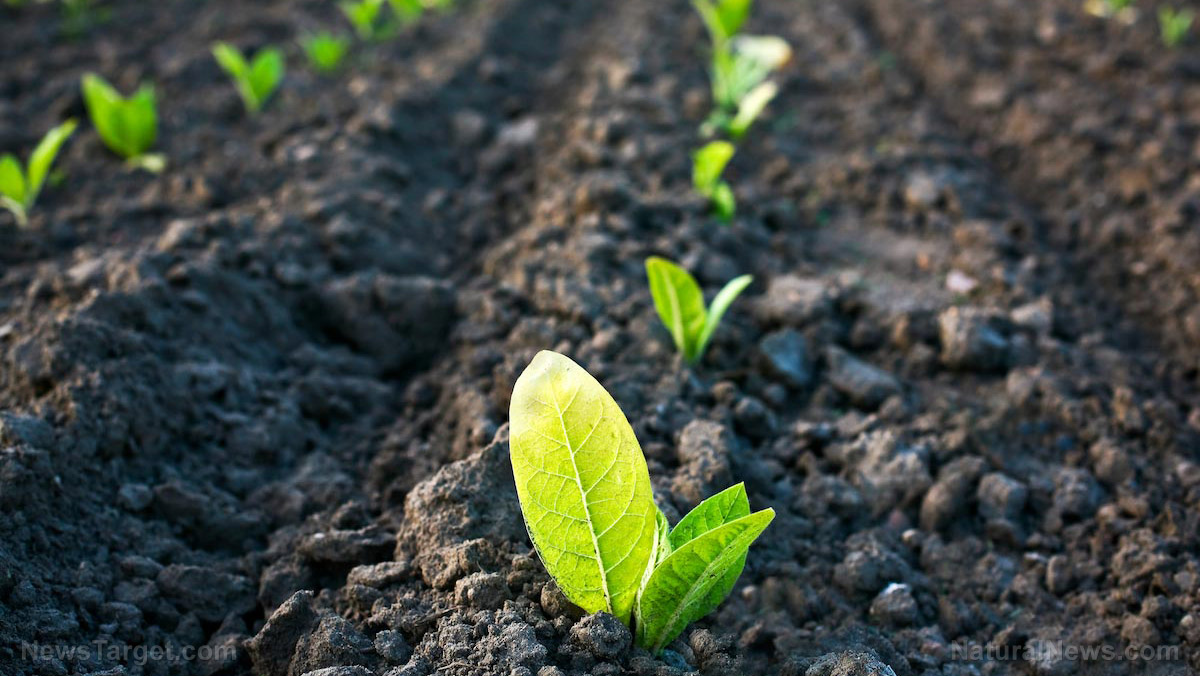Soil on Nutrient Content of Food
 Monday, July 31, 2023 at 10:43PM
Monday, July 31, 2023 at 10:43PM Health grows from fertile soils. Good soil is alive with living organisms as well as abundant nutrients. These elements in good soil produce healthy and nutritious plants and healthy animals that feed on them.  Most of these soil elements get recycled back into the soil through various processes to renew the health of the soil. But over time, soil fertility tends to diminish even with abundant fertilizing intervention. ref ref
Most of these soil elements get recycled back into the soil through various processes to renew the health of the soil. But over time, soil fertility tends to diminish even with abundant fertilizing intervention. ref ref
There are natural cycles that need to be respected to maintain soil quality. In the largest scope of influence, glaciers growing and retreating grind rocks into dust which is then transported either by rivers or wind to re-fertilize soils. This cyclical action renews soil that is weakened by plant overgrowth, erosion from rain washing nutrients down to the ocean, wind blowing nutrients away during dry seasons as well as food crops transportation away from growing areas. The changes that soil fertility influences are the type of trees that grow in a particular area and the size of leaves that have a direct link to creating climate weather patterns above the land. Chief among these are represented by broad leaf trees should as maples being replaced by pine needle trees. ref ref ref
Eventually the loss of soil fertility generates the need for another ice age of numerous degrees. It's a necessary and natural cycle. It is interesting to note that many commercial fertilizers contain rock processing gravel dust.
Here is the Cycle
- Volcanoes erupt and push up rocks from below as well as form new rocks ref
- Some of these Rocks are then pushed up to form mountains
- Glaciers form on some mountain tops
- The weight of the glaciers growing and retreating, puts pressure on the rocks below grinding part of them into dust
- This dust moves with water down mountains and fertilizes soil in valleys
- During dry spells, the dust gets blown up into the sky and travels many miles where it eventually falls and fertilizes distant soils. ref
- This mineral fertilized soil grows healthy plants and trees.
- Plants and trees use carbon dioxide and nitrogen in the air and with sunlight make photosynthesis happen.
- This produces fruits, nuts, and other parts of plants that either fall and return to the soil, or are eaten by animals.
- Animals poop out these nutrients plus some bacteria produced elements back into the soil.
- The basic principle at play is that this cycle maintains pH of soil at slightly alkaline.
- Transporting food crops away from growing area disrupts this recycle pattern.
- This results in the reduction of alkaline minerals and the soil starts turning slightly acid.
- Earthworms, vital to soil and crop health, do not like acid soil or survive certain tilage procedures. ref
- Commercial fertilizers cover for some of the major minerals for awhile and have to use chemicals to help plants survive.
- Eventually, the soils get worn out as too many nutrients are lost and even greater amounts of fertilizers fail to keep up and the soil needs to be replenished by increased glacial type actions.
- Erosion of nutrients eventually reaching the oceans also participates in marine life forms and structures in both a positive as well as a negative outcome
- Coral and other organisms growth traps CO2 which takes it out of the atmosphere cycle for awhile.
- While difficult to imagine, Algae growth influences cloud formation which impacts climate temperatures, storms, and rainfall.
- Algaes and other marine life influence ocean pH that cycles back to further influence these cycles.
Signs that expose the need for new glacial activity are showing up more and more lately as plants and trees are suffering health issues. There is talk about spreading the glacial melt dust from Greenland to fertilize the worn out earth soils. ref But, this would be a challenging feat.
Now, this cycle information should have raised some vital questions for the processes used by large scale commercial farms to produce food for humans and animals. And you would be right. The food crops grown are showing signs of reduced nutrient amounts from weakening soil fertility, even with the use of certain fertilizers. Higher crop output is often offset by lower nutrient content of food.
Plus, the erosion and element runoff from commercial fertilized farms flowing into the sea is disrupting sea life. ref This is a major problem that organic farming attempts to address. But, it too has contamination and runoff problems. article Backyard farming should be mainlined.
Of Interest: plants and trees love CO2. Since fossil fuel burning has increased atmospheric CO2 levels, the earth is experiencing a re-greening with increased greens growing in new areas, like deserts, equal to cover an area the size of the United States. This has been verified by NASA pictures from space. This result is trapping more CO2 and slowing down increase trend.
Reader Comments